Sometimes I feel like there are two Alan Wakes: There’s the game that actually exists, and the game that lives in our collective memory.
I know I have fond memories of the game. That setting! That story! Those pretty, pretty lights! It was such a mystery, like getting to play through a Dean Koontz paperback thriller. But I also remember the various times I’ve gone back to replay Alan Wake since it first came out in 2010. I remember having fun for a few hours, then becoming frustrated. Doesn’t it get kind of tedious and repetitive? Doesn’t it suffer from insipid narration and weird pacing? Isn’t the main character kind of a shitheel?
Last week, Polygon’s Ben Kuchera wrote an article titled “Alan Wake‘s cultural footprint: Why players and developers still love this amazing game.” I was intrigued, but sceptical. Was Alan Wake really amazing? It’d been several years; time to go back and play it again.
I reinstalled the game on my PC and fired it up. I’ve been playing off and on for the last few nights, and — drumroll — I’ve been having a pretty good time! I’m reminded of the good and the bad, but on the whole I’m actually liking the game more than I was expecting to.
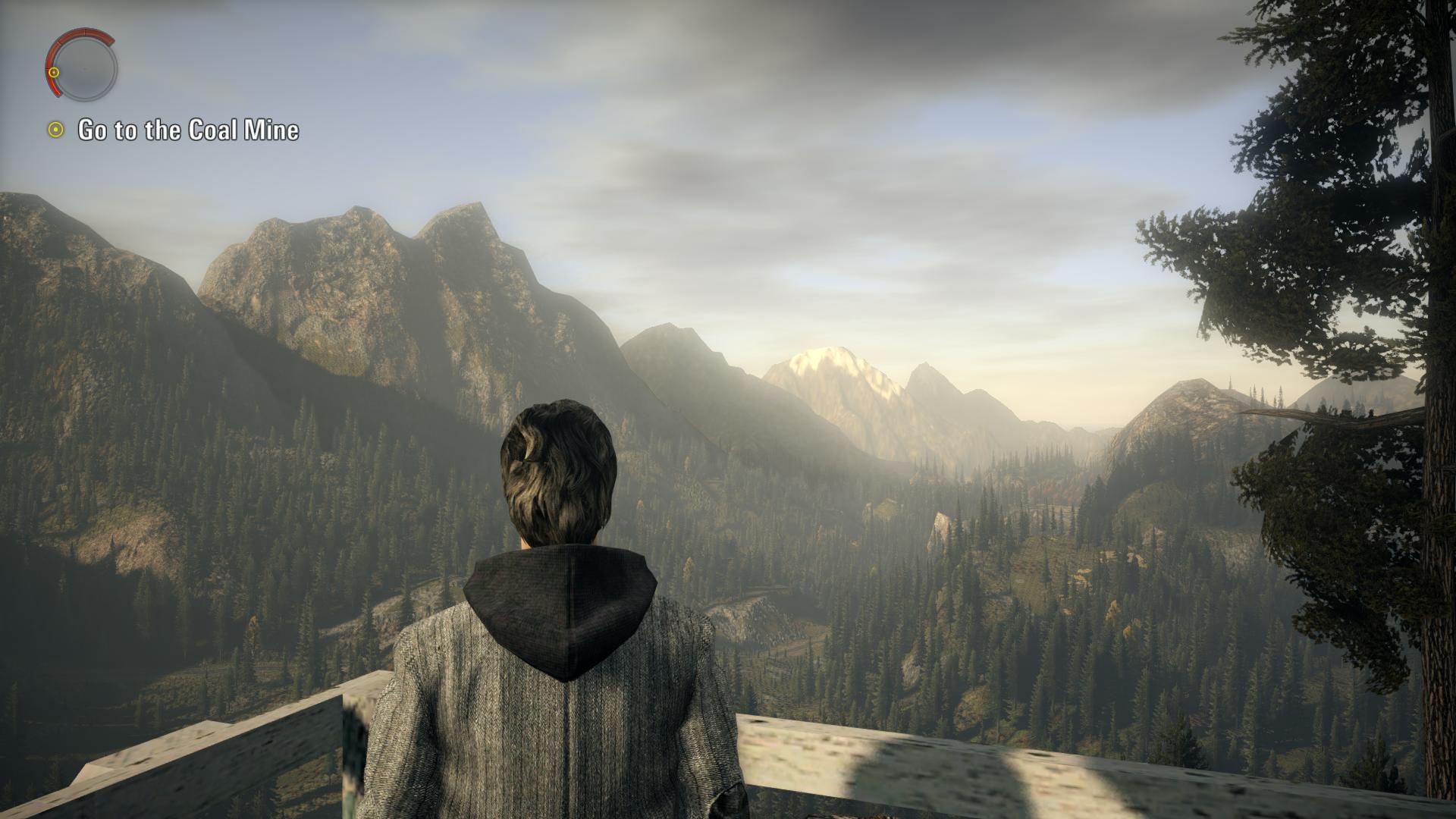
The problems I remember are still there — the narration still smothers the atmosphere, the facial animations still make the characters look like horrifying meat-puppets, collectable coffee thermoses still somehow feel aggressively distracting despite technically being optional. Everything that isn’t “combat against dudes” is kind of a drag, with annoying floating poltergeists at the top of the go-away-list. All the same, I’m impressed with how many smart, original ideas Alan Wake had going on.
In fact, I’m surprised that more games haven’t borrowed Alan Wake‘s good ideas in the five years since it came out. Which ideas am I talking about? Glad you asked.
1. Those Manuscript Pages
Alan Wake‘s central mystery revolves around an unfinished manuscript. It’s Wake’s next great novel, but he has no memory of writing it. He’s lost his memory of the last week, so it’s possible that during that time he somehow wrote a novel that he doesn’t remember. Then comes the supernatural hook: Things in the manuscript are actually coming true.
You’ll find a manuscript pages lying about as you explore; one might describe a character you haven’t met, or set up a terrifying encounter that hasn’t occurred.
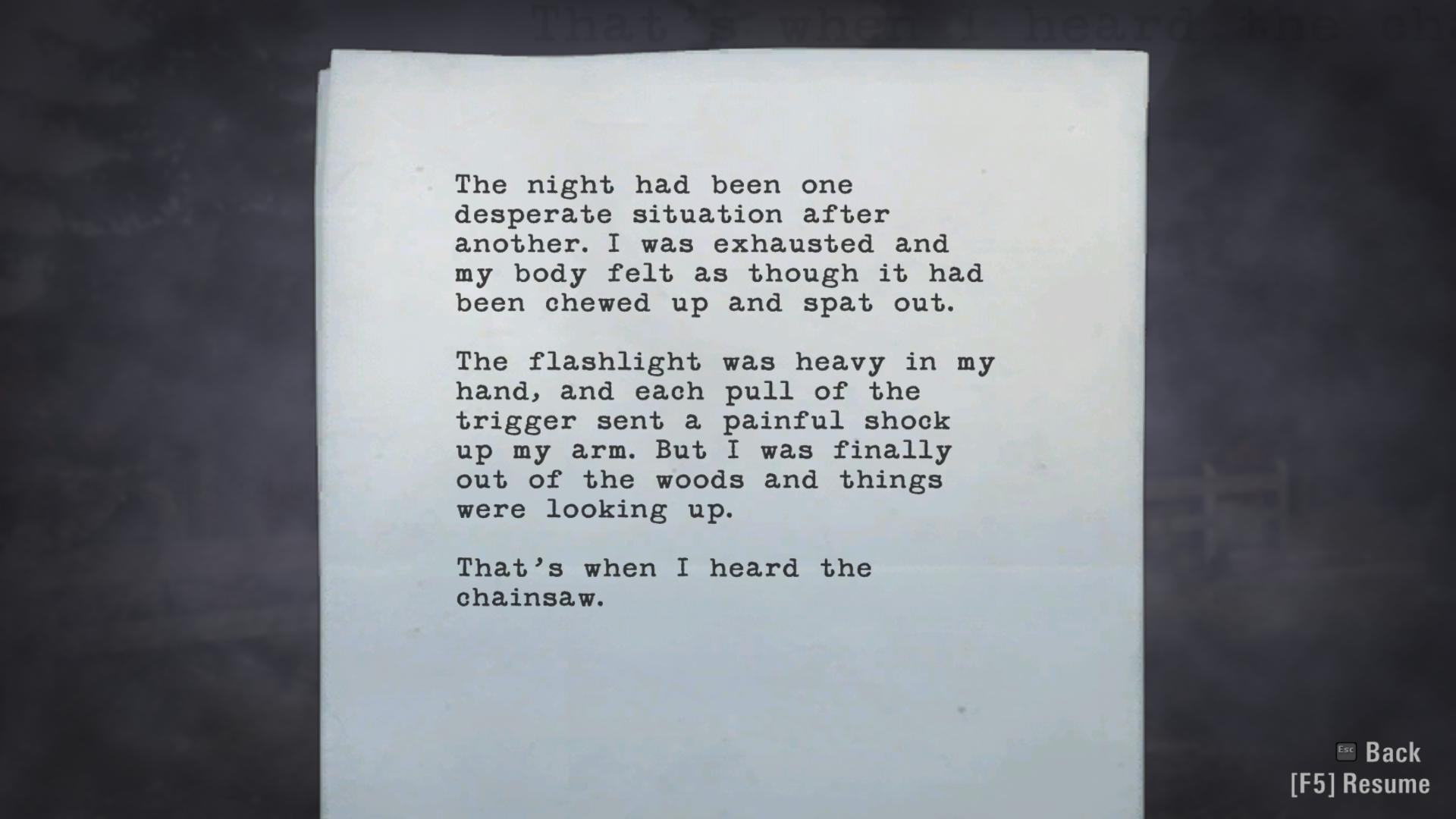
That’s a neat trick! The game is spoiling you on things that haven’t happened yet, but only partially — the pages are incomplete, and don’t tell you when or where the scene in question is going to happen. It adds a new layer to the way the story is delivered to the player.
There actually is a new game experimenting with this sort of thing — Dontnod’s episodic adventure game Life is Strange. That game also plays with notions of player omniscience and stacked narrative, letting you see into the future and rewind time to unmake the short-term decisions your character made. (Wake seems to have been an influence in other ways, too — Life is Strange‘s protagonist Max is yet another narrator who should keep quiet more often.)
Life is Strange is also set in a small town in Oregon, and actually captures quite a bit of what made Alan Wake‘s setting and mysterious vibe stand out. A heart-on-sleeve adventure game about Teen Girls Feeling Things seems an unlikely successor to a game about a hoodie-wearing jabrone shooting nightmare lumberjacks, but there it is.
2. The Combat (Against Dudes)
When you’re playing an action game, you have to make a whole bunch of little decisions at once. Once you’ve made those decisions, the game will react and push back, and you’ll see how effective your decisions were. Call it a feedback loop, or a combat loop; it’s basically the thing that defines “what it feels like” to play an action game.
The basic combat loop in Alan Wake is really good. That’s primarily because of the flashlight. Most shooting games give the player a gun, some bullets, and some targets. The choices are straightforward: Do I shoot at this guy or do I take cover? Do I have enough bullets to kill him or will I take too much damage? Are there other guys shooting at me? In what order should I return fire? Do I need to reload, should I switch to an alternate weapon, or can I just keep pulling the trigger?
Alan Wake‘s flashlight adds a new layer to the established formula, compounding the decision-making process in a nifty way. You can’t damage enemies until you’ve burned the shadows off of them, which basically means enemies all have shields. Lots of games have shielded enemies, but in most games, shields are just “more health.” The difference in Alan Wake is that you have two weapons, one for bringing down shields and one for dealing actual damage. You’re usually taking on 3 or 4 enemies at once, meaning you have to prioritise which enemy you want to target and really commit, all the while avoiding the other ones and maintaining as much control over your tactical position as you can.
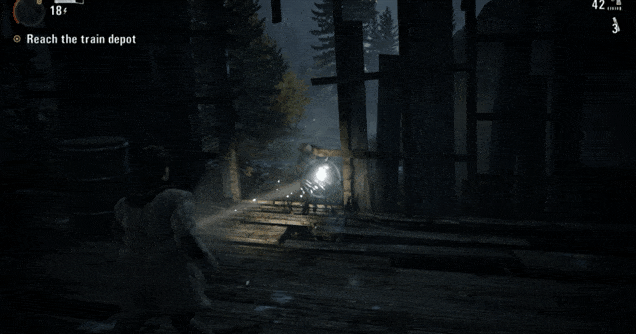
The whole thing is well balanced, particularly during the opening hours. A full charge of your flashlight will take out one enemy’s shield. Reloading your pistol takes time, but you can instantly reload your flashlight, so you start to think of the two weapons very differently. On normal difficulty, once an enemy’s shield is down, you can take down standard enemies with 3 revolver bullets, which means that if you shoot perfectly, you can take down two enemies without reloading your revolver. Enemies rush you, but you can also use your flashlight as crowd control, slowing them down and interrupting their attacks to buy yourself some time.
With every encounter, the choices you make become more complicated and interesting: I started burning this guy’s shadows off, should I switch to focusing on this guy who’s closer to me? I hit the guy on the left with one bullet and the guy on the right with two, and I missed once. Which guy should I take out before I reload? Should I jam in another battery, or can I do this without wasting one? Are there enough guys around me to justify using a flare or a flashbang?
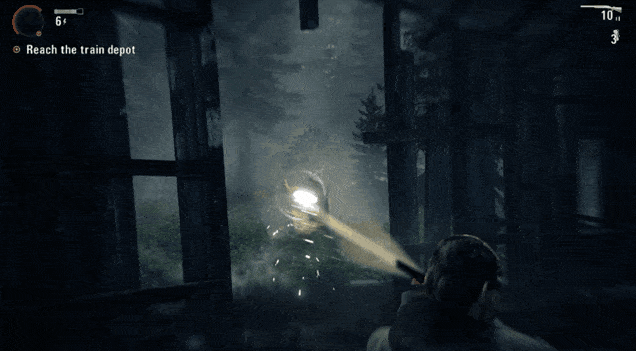
I’m surprised that more games haven’t borrowed Alan Wake‘s “burn off shields with left trigger, shoot with right trigger” setup. Other games have experimented with similar notions, notably Atari’s weird-but-interesting 2008 Alone In The Dark, but I haven’t played any that make it as streamlined or intuitive as Alan Wake.
That streamlining is crucial, since it allows so many of Alan Wake‘s combat decisions to be made in the heat of the moment. It feels great to use — the way you can half-press the left trigger and aim without “firing” your flashlight, the way the flashlight’s beam combines with subtle aim-assistance to make you feel just accurate enough without requiring an on-screen aiming reticle, the way the game signals “all clear” by giving you a Max Payne-style slow-mo shot of your final foe going down. Even this many years later, Alan Wake‘s combat doesn’t quite feel like anything else I’ve played.
(Related side note: I’m also surprised more games haven’t taken Alan Wake‘s “mash the X button to reload faster” trick, which lands somewhere between Gears of War‘s active reload and an ordinary shooter’s one-button reload.)
3. It’s Episodic, But Also Not
Alan Wake is an episodic game, but all of the episodes were contained on the game disc. The story was continued (to an extent) by two downloadable episodes released in the months following the main game, but on the day Alan Wake came out, it was possible to put the disc in your Xbox and play through the story’s six main episodes back-to-back.
When Alan Wake came out, episodic games were fewer and farther between than they are now. Game developers had begun to experiment with the idea of releasing “episodic” games all at once — that was yet another similarity Atari’s Alone in the Dark bore to Alan Wake — but in 2010 Netflix was still a few years from releasing House of Cards in a single-shot, and the term “binge-watch” had yet to become common parlance.
I’m neck deep in three different episodic adventure games right now, and it feels natural to have a game progress as Alan Wake does. The episodic format greatly helps the game’s pacing, which I’d remembered as uneven but which, at least in the early chapters, actually makes sense in the context of standalone episodes. (I recall the later episodes getting so long that the whole episodic conceit starts feeling perfunctory.)
Nowhere does the game benefit more from its episodic structure than at the moment when each episode draws to a close. The game fades to black, a pop tune begins playing, and the title screen comes up. Poets of the Fall’s Zeppelin-like “The Poet and the Muse” contributes to my favourite moment in the entire game (I’m betting I’m not alone in that):
Critic John Teti put it well in his Eurogamer review of the first of Alan Wake‘s two DLC episodes:
Alan Wake is best when it’s ending. That’s a compliment. The game hits an aesthetic high whenever one of its episodes draws to a close, with a stark title screen and a cut of music that’s perfect for the moment. I savour those few seconds when the text (“End of Episode Five” or what have you) slinks on-screen in tendrils of smoke, and I love that the song makes everything you just played feel like a grand journey.
I’m halfway convinced that those evocative conclusions are a big part of the reason we think back so fondly on Alan Wake itself. The episode’s various annoyances fade, and we’re left with a cool tune and a black screen. I’ve seen other games experiment with the all-at-once approach to episodic storytelling — most recently, Battlefield Hardline — but not nearly as many as I would have expected.
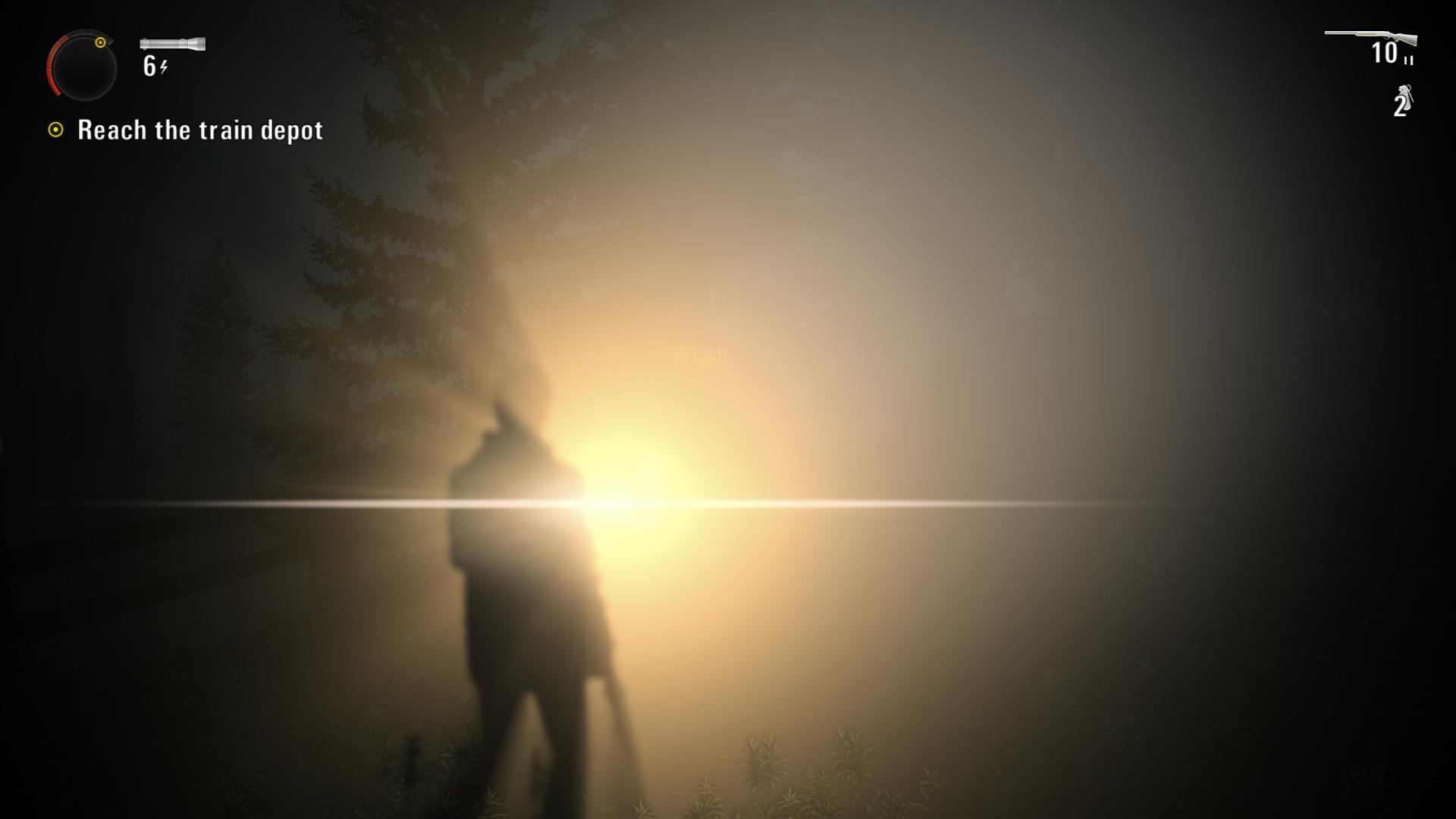
Midway through Alan Wake‘s fourth episode, I sense I’ve reached the point where things lose focus. There are still some good bits coming — and some great music — but the game becomes increasingly cumbersome, the narration increasingly annoying, and the combat starts to lose the momentum it had in those opening hours.
During those opening hours, though, Alan Wake does very well for itself. I’d expected to revisit the game and be reminded of all of its faults. Instead, I found myself impressed with just how many good ideas Alan Wake had, and hopeful that more new games will explore and improve upon them.
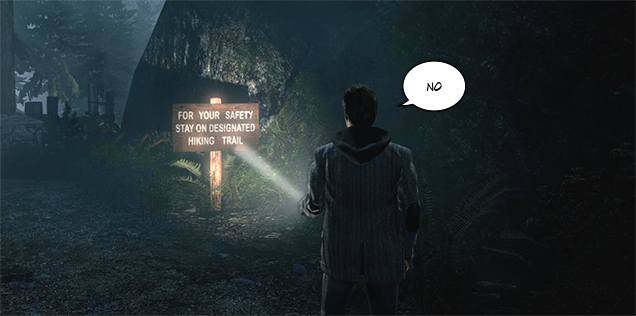
Comments
12 responses to “3 Things Other Games Should Steal From Alan Wake”
If/when there’s an Alan Wake 2, please don’t make it episodic. I love the Telltale Games games (ha!), but eagerly awaiting the next episode of a psychological thriller would kill me.
They mean episodic in the way the game breaks up it’s chapters not episodic like Half-Life 2.
I enjoyed it because I could sit down and play an episode and finish it up in a couple of hours. The next time I played again I got a nice little recap of what I did last episode so I never really forgot what I did previously. It just did it in nice chunks that let you play it out over an extended period.
I know what they mean since I played the original. It would be good to keep it like that, as opposed to a staggered release like the Telltale Games model is what I was trying to say.
Alan wake was good, but so was silent hill shattered memories. We need more games to leverage and expand the budding ideas introduced by those flawed gems.
I can’t think of any title in particular, but we have seen more of a focus on playing the player in recent years (stanley parable, etc).
Would be great to see this game on more powerful hardware (console, not the PC) – the screen tearing really spoilt the atmosphere of this awesome game
As a Playstation owner – this one was a real loss.
I loved the Netflix style episodic nature of it.
I played it over a week or so, I would play an episode a night and it was just the right amount of playtime and it allowed the story time to “land” (like with a good episode of House of Cards or Game of Thrones)
Being able to play at my own pace is much preferable over having to wait the months between episodes of telltale games
Yeah, but I felt in an endearing kind of way (not in a Connor from ACIII way). I also really liked the narration and the general atmosphere. I will say though, that the character animation was really bad. I played it for the first time when it was a few of years old, but this particular thing made me think it was way older than it was…
Reference Kuchera, all credibility lost
Alan Wake really was a rough diamond. So much to love, but it was really hobbled by the hardware it was made for and a few odd design decisions.
I still think it was totally worth playing, though.
Not only was Alan Wake’s episodic structure a fantastic way to break the monotony and slow pacing but it brought the story back into focus, reaffirming the motivations behind all of his actions.
Furthermore, the world was well established with the short live action series leading up to it and the diary with the limited edition. The two of them set an incredible atmosphere that framed the game perfectly.
I’ve never played another game like it and it weighed heavily on me when I changed to PS for this generation.
Such an amazing game. Still have my LE copy in the “book”. I’d grab a remaster on Xbox One in a heartbeat. Hopefully the rumour is true and it comes as a pre-order bonus for Quantum Break. Could explain Quantum Break’s delay?
I remember getting it from the Humble Bundle with all the trimmings – Was an excellent play.
It actually felt to me a lot like the depth of immersion and intensity that horror film creators wanted to expose you to – was surprised to get it so well from a game and would love to see it evolve.
…Those crows man…